Do you hate ‘leg days’? Well, so do I. And one of the reasons why leg day seems so daunting is the tightness or soreness we feel in our legs. That’s why here are the top 7 stretching exercises for legs that you need to do to improve your flexibility and overall health.
What exactly is leg stretching?
Leg stretching refers to physical activities that involve lengthening and elongating the muscles in the legs to improve their flexibility and range of motion. It is a form of exercise that can help prevent injury, reduce muscle soreness, and improve overall physical performance.
Leg stretching can be done as a standalone activity or as part of a warm-up or cool-down routine before or after other physical activities such as running, weightlifting, or sports.
Let’s find out about some of the best leg stretches that you can perform to make your lower limbs feel youthful again.
Related: 8 Foot Exercises That Can Cure Back Pain In Minutes

Best leg stretches that you need to do
Do you spend long hours sitting at a desk? Or are you an athlete looking to improve your performance? Regardless of what your situation is, performing stretching exercises for legs on a daily basis can be highly beneficial.
Are you ready to stretch it out and say goodbye to those tight, achy legs? Here are some effective stretching exercises for legs that you can do at home or at the gym –
1. Calf stretch
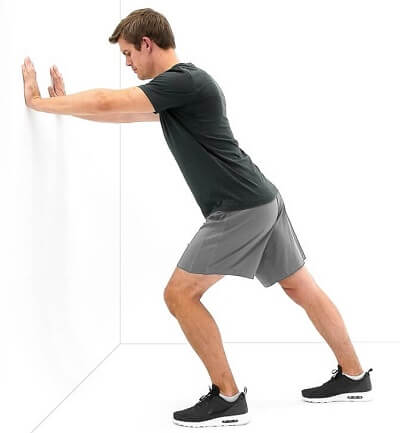
Your calf muscles consist of the gastrocnemius and soleus muscles. Unfortunately, tight calf muscles can lead to Achilles tendinitis and plantar fasciitis. Calf stretches target the muscles at the back of the lower leg and can help improve flexibility in the ankles and knees.
To perform this stretch, stand with your feet hip-width apart and place your hands on a wall or stable object for balance at shoulder height. Step back with your left foot and bend your right knee, keeping your left leg straight.
Press your left heel into the ground and hold the stretch for 15 to 30 seconds, then switch sides and repeat. This is one of the leg stretches after workout you can try.
2. Hamstring stretch

The hamstring stretch targets the muscles at the back of the thigh and can help improve flexibility in the hips and lower back.
To perform this stretch, start by sitting on the floor with your legs straight out in front of you. Bend your right knee and place the sole of your foot against the inside of your left thigh.
Keeping your back straight, reach forward and try to touch your toes with your left hand. Hold the stretch for 15 to 30 seconds, then switch sides and repeat. You can also use a strap or towel to help you reach your toes. This is an excellent single straight leg stretch that every one must do. This is an excellent single straight leg stretch that every one must do.
3. Quadriceps stretch

Your quadriceps (quad muscles) are the large muscles on the front of your thighs while your hamstrings lie at the back. Both muscle groups help you bend and straighten your knees.
The quadriceps stretch targets the muscles at the front of the thigh and can help improve flexibility in the hips and knees.
To perform this stretch, stand upright with your feet shoulder-width apart. Bend your right knee and bring your heel towards your buttocks, then grasp your ankle with your right hand. Hold the stretch for 20-30 seconds, then switch legs and repeat.
This exercise is fairly simple and can be done easily at anytime making this one of the best leg stretches before workout that you can do.
4. Butterfly stretch

The butterfly stretch targets the muscles in the inner thigh and can help improve flexibility in the hips.
To perform this stretch, sit on the floor with the soles of your feet together and your knees bent out to the sides. Grasp your ankles with your hands and gently press your knees towards the floor. Hold the stretch for 15 to 30 seconds. One done properly, such leg lengthening exercises can be highly beneficial.
5. Pigeon pose

The pigeon pose stretch targets the muscles in the hips and can help improve flexibility in the lower back and glutes.
To perform this one leg stretch, start in a push-up position, then bring your right knee towards your right hand. Lower your right leg towards the floor and extend your left leg behind you. Keep your hips square and hold the stretch for 15 to 30 seconds, then switch sides and repeat.
6. Seated forward fold

The seated forward fold stretch targets the muscles in the lower back and hamstrings and can help improve flexibility in the spine.
To perform this stretch, sit on the floor with your legs straight out in front of you. Reach forward and try to touch your toes with your hands. Hold the stretch for 15 to 30 seconds. This is among the best leg stretches before workout.
7. Standing forward bend

The standing forward bend stretch targets the muscles in the hamstrings and lower back and can help improve flexibility in the spine.
To perform this stretch, stand with your feet shoulder-width apart. Keeping your back straight, bend forward and try to touch your toes with your hands. Hold the stretch for 15 to 30 seconds.
8. Lunges
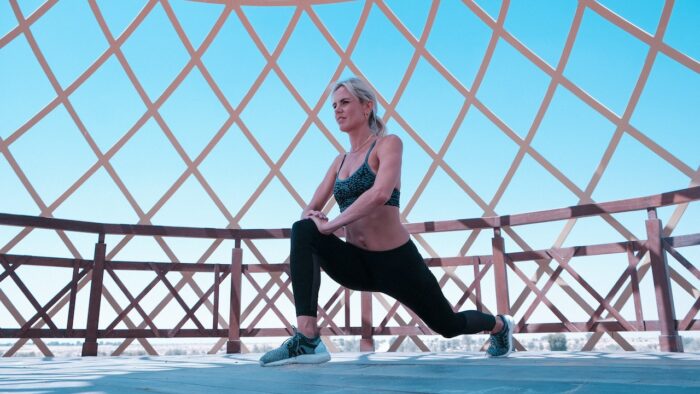
Lunges are a dynamic stretching exercise that targets the muscles in the legs and can help improve flexibility in the hips and knees.
To perform this exercise, start in a standing position, then step forward with your right foot and bend your right knee, keeping your left leg straight. Lower your left knee towards the ground, then push back up and repeat on the other side. Aim for 10 to 15 reps per side.
9. Leg Swings
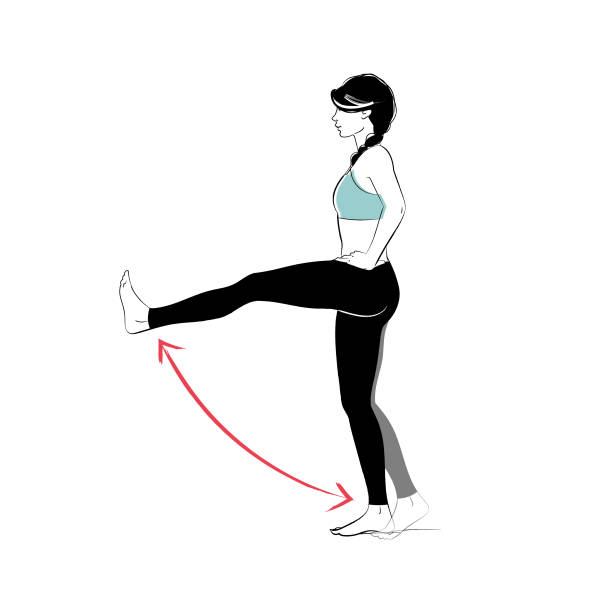
Leg swings are another dynamic stretching exercise that can help improve flexibility in the hips and legs.
To perform this one leg stretch, stand facing a wall with your hands on the wall at shoulder height. Swing your right leg forward and backward, keeping your leg straight. Repeat on the other side, aiming for 10 to 15 reps per side.
10. Squats
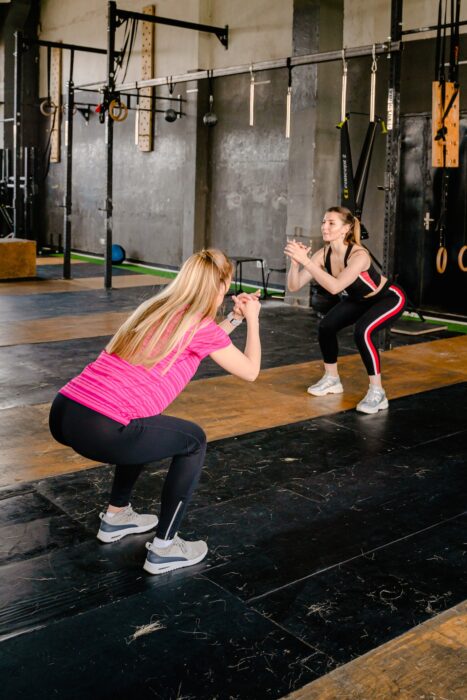
Squats are one of the best stretching exercises for legs. It is a dynamic stretching exercise that targets the muscles in the legs and can help improve flexibility in the hips and knees.
To perform this exercise, stand with your feet shoulder-width apart, then bend your knees and lower your hips towards the ground. Keep your back straight and your heels on the ground, then push back up to a standing position. Aim for 10 to 15 reps.
Related: 6 Yoga Poses To Release Difficult Emotions
11. Hip flexor stretch

Your hip flexors help lift and bend your leg at the hip. Tight hip flexors can pull on your lower back, causing pain.
To do this one leg stretch, kneel on the floor with your left foot in front of you. Lean forward with your hips until you feel a stretch in your right hip flexor. Hold for 30 seconds and repeat on the other leg.
12. Groin stretch
Your groin muscles are connected to your adductor muscles – the group of muscles on the inner thighs that bring your legs together. Stretching the groin increases flexibility and range of motion.
To perform the butterfly groin stretch, sit on the floor with the soles of your feet together. Hold your feet and press your knees towards the floor. Lean your torso forward and hold. You should feel gentle pulling along your inner thighs. Hold for 20-30 seconds.
13. Inner thigh stretches
Your adductor muscles enable you to move your legs medially or bring your thighs together. Tight adductors can cause back, hip and groin pain. You can perform the Figure 4 stretch to target your inner thighs as it is a great lying down hamstring stretch.
Simply sit on the floor and bend one leg inward with the sole of your foot pressed against the inner thigh of your other leg. Grasp your foot and pull it closer until you feel your adductors lengthen and stretch. Hold for 20-30 seconds and switch legs. This is one of the best and simplest lying down hamstring stretch that you should do.
14. Runner’s lunge

This one leg stretch exercise targets the hip flexors, hamstrings, and quadriceps muscles and can help improve flexibility in these areas.
To perform this single straight leg stretch, start in a high plank position, with your hands directly under your shoulders and your feet together. Step your right foot forward between your hands, keeping your right knee directly over your ankle.
Lower your left knee to the ground and slide your left foot back until you feel a stretch in your left hip flexor. You can keep your hands on the ground or raise them overhead for a deeper stretch. Hold the stretch for 15 to 30 seconds, then switch sides and repeat.
Apart from these there are many other variations that you may try such as single straight leg stretch, one leg stretch, lying down hamstring stretch and leg lengthening exercises that can be highly beneficial for you.
When it comes to stretching exercises for legs, it’s important to start with a warm-up. This can be a light cardio workout or some gentle stretching to get the blood flowing to the muscles. Once you’re warmed up, you can begin with the above exercises.
Types of leg stretches
There are various types of leg stretching exercises, including static stretching, dynamic stretching, and proprioceptive neuromuscular facilitation (PNF) stretching, each with its own unique benefits. Let’s explore these different types of leg stretches –
1. Static stretches
Static stretching involves holding a stretch for a period of time. Here, you hold a stretch for a certain period of time without moving. This type of stretch is great for improving flexibility and relaxing your muscles.
2. Dynamic stretches
Dynamic stretching involves moving through a range of motion. Here, you move through a wide array of motions while stretching. This type of stretch is great for warming up your muscles before a workout.
3. PNF stretches
PNF (proprioceptive neuromuscular facilitation) stretching involves a combination of static and dynamic stretching techniques. It includes contracting and then relaxing a muscle group before stretching it. This type of stretch is great for improving flexibility and range of motion. This is one of the most effective types of leg stretches.
Related: 5 Of The Best Stress Relief Exercises For A Calm Mind & Body
Benefits of leg stretching exercises
Our legs play a vital role in our daily lives, allowing us to walk, run, climb stairs, and participate in countless physical activities. However, our sedentary lifestyles and failure to stretch properly can leave our legs inflexible, tight, and prone to aches and pains.
Stretching our legs on a regular basis can remedy this situation by loosening tight muscles, reducing aches and pains, improving flexibility, and enhancing athletic performance.
Stretching exercises for legs can help improve flexibility, prevent injury, and reduce muscle soreness. Whether you’re an athlete, a fitness enthusiast, or someone who spends a lot of time sitting, incorporating stretching into your daily routine can have numerous benefits.
Here are some of the most common benefits of leg stretching exercises.
1. Improves flexibility
The best leg stretches help to increase your range of motion, thereby improving your flexibility. When you have better flexibility, you are less likely to experience muscle soreness and injuries.
2. Reduces muscle tension
When you do leg lengthening exercises, you release tension that has built up in your muscles. This tension release can help to reduce muscle soreness and improve your overall relaxation.
3. Improves blood circulation
Leg stretches before workout or afterwards helps to improve blood flow to your muscles, which can help to reduce muscle tension and improve your overall health.
4. Improves posture
Regular leg stretches after workout can help to improve your posture by strengthening your core muscles and improving your balance.
5. Relieves stress
Leg stretching exercises can be a great way to relieve stress and calm your mind.
How to use stretching exercises for legs in daily life
All the best leg stretches can be done almost everyday, either before or after a workout or on their own as a separate stretching routine. But it’s important to warm up your muscles before stretching to prevent injury.
If you are doing leg stretches before workout, start with dynamic stretches to warm up your muscles. If you are doing leg stretches after workout, start with static stretches to help your muscles relax.
Mistakes to avoid when doing stretching exercises for legs
When doing leg stretches after workout or before training, it’s important to avoid these common mistakes:
1. Bouncing
Do not bounce when stretching. This can cause injury and does not improve flexibility.
2. Overstretching
Do not push yourself too hard when stretching. You should feel a stretch, but it should not be painful.
3. Holding your breath
Breathe deeply and slowly while stretching. Holding your breath can cause tension in your muscles.
Related: Psoas Muscle Pain Relief: 5 Ways To Heal the ‘Muscle of Your Soul’
How to get the most out of stretching exercises for legs
Here are some tips for getting the most out of your leg lengthening exercises:
1. Start slowly
If you are new to stretching, start with shorter stretches and gradually increase the length of time you hold the stretch.
2. Be consistent
Stretching is most effective when done regularly. Aim to stretch at least 3-4 times a week.
3. Listen to your body
If a stretch feels uncomfortable or painful, stop doing it. Do not force yourself to stretch through pain.
Do you need any equipment?
While equipment and props are not necessary to perform the best leg stretches, here are some equipment that can enhance your experience when trying the different types of leg stretches:
1. Yoga strap
A yoga strap can be used to help you reach your toes in seated forward bends and hamstring stretches.
2. Yoga block
A yoga block can be used to support your hips in seated forward bends.
3. Foam roller
A foam roller can be used to massage your muscles before or after stretching.
Who should perform stretching exercises for legs?
While almost anyone and everyone can and should do the best leg stretches mentioned above, these can be especially beneficial for certain groups of people, conditions and activities, such as –
1. Runners/athletes
Runners and athletes should focus on stretching their calves, hamstrings, and hip flexors to avoid injury.
2. Cyclists
Cyclists should focus on stretching their quadriceps, calves, and hip flexors.
3. Pregnant women
Pregnant women should focus on stretching their hips, lower back, and legs for overall physical well-being.
Takeaway
Doing the above stretching exercises for legs regularly can help relieve pain, reduce muscle soreness, improve range of motion, increase flexibility in your lower limbs and reduce the risk of injury. Start slowly and hold each stretch for only as long as you feel comfortable.
Whether you’re an athlete, a fitness enthusiast, or someone who spends a lot of time sitting, these stretching exercises can help improve your overall health and well-being. Remember to start with a warm-up before stretching and to hold each stretch for 15 to 30 seconds. And always listen to your body.
Over time, you’ll be able to move deeper into the stretches while still maintaining proper form. With consistency and patience, a dedicated stretching routine can transform your legs from tight and inflexible to youthful and pain-free.
Happy stretching!
Do you have a favorite leg stretching exercise? Share it with us in the comments below!
Related: Get Fit At Home: The Best Beginner Workout Plan At Home For A Stronger, Healthier You
Frequently Asked Questions (FAQs):
What are the best stretches for inner thigh pain?
Some of the best stretches for inner thigh pain include the butterfly stretch, seated straddle stretch, and the frog stretch. These stretches can help alleviate tightness and discomfort in the inner thigh muscles.
What are dynamic exercises for legs?
Dynamic exercises for legs involve movements that actively engage the muscles and increase range of motion. Examples include lunges, squats, leg swings, and high knees. These exercises can improve flexibility and overall physical performance.
What are lower extremity stretches?
Lower extremity stretches are exercises that target the muscles in the lower body, including the legs, hips, and lower back. They can help improve flexibility, prevent injury, and reduce muscle soreness in the lower extremities.


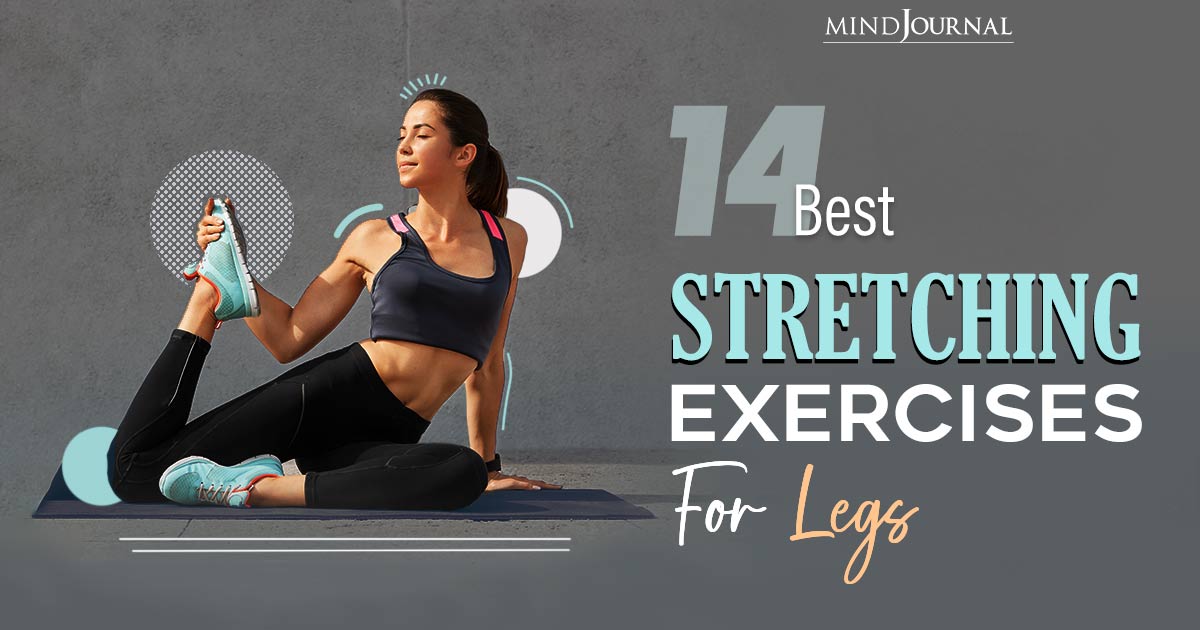

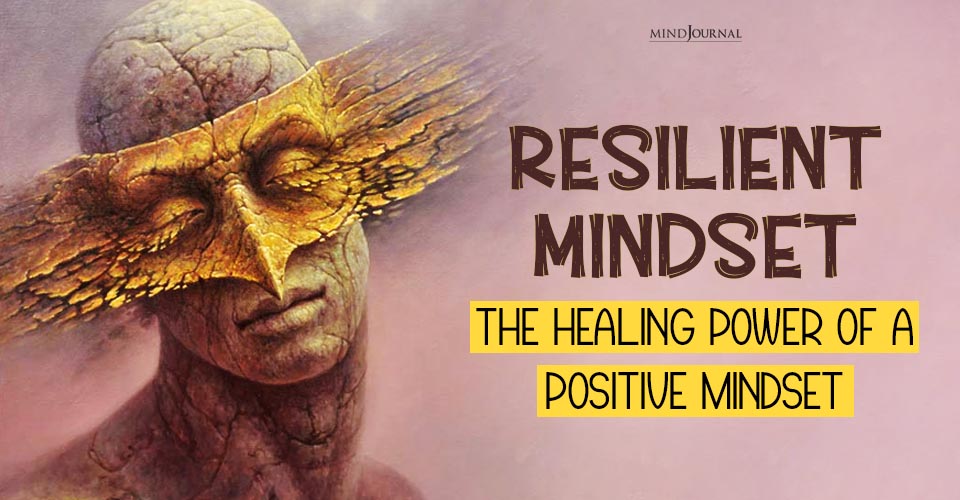
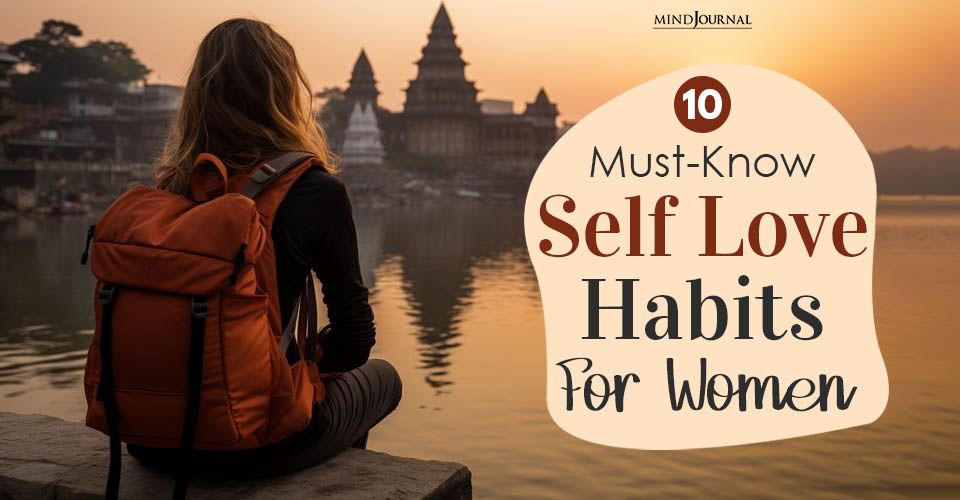




Leave a Reply